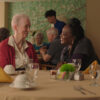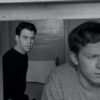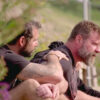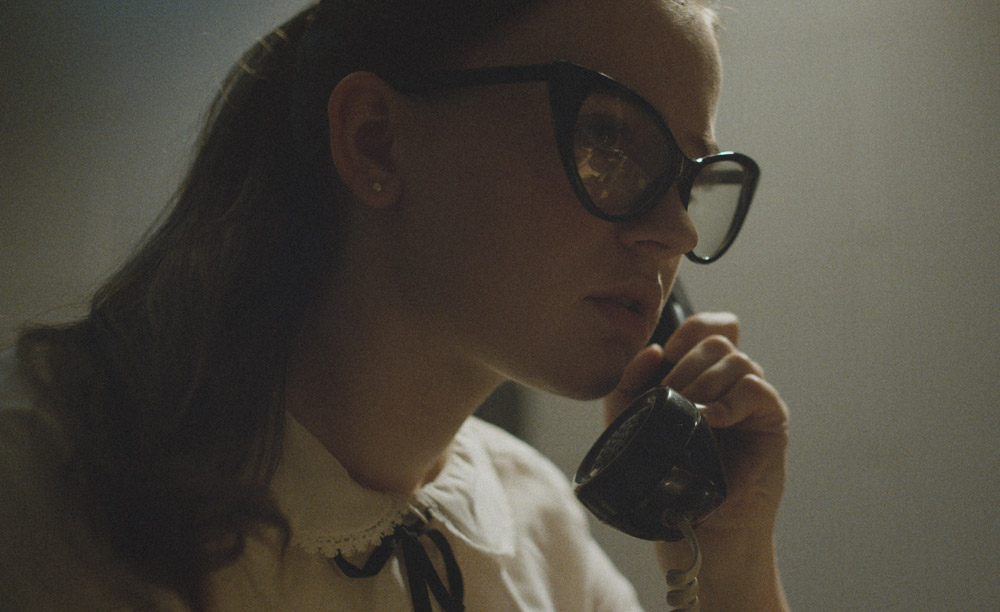About a month out from shooting his feature debut “The Vast of Night,” Andrew Patterson began talking with his cinematographer M.I. Littin-Menz about how to pull of “the shot,” a long tracking shot through the fictional town of Cayuga, New Mexico in the dead of night that never fails to cause audiences to gasp. It’s the kind of thing that is digitally stitched together in films with budgets literally hundreds of times higher than what Patterson had at his disposal, but you suspect even if he had such a benefactor, when the Oklahoma-based director had come this far without the help of Hollywood, he wasn’t about to start now.
“Nobody said, ‘Ok, to get from here to this side of town, these are the tools you need. It’s going to cost this much. Myself and my camera guys who had worked on other projects before this were the ones that tested this in our own time, and I don’t ever expect the solution, especially film industry solutions to necessarily be the most cutting edge, the most economical and the fastest. They rarely are,” Patterson said recently. “We designed our shots based on where the experts in this field would be, [and when] you’ve got people that live in these houses in this town and they know these streets and they’re sitting around on stuff that they take off-road, like their go-karts and they fly down the streets of these rural communities, [I thought] why don’t we use those people to help us do what we need to do?”
This wasn’t a last resort for Patterson, who proudly calls himself one of the first owners of a Movi gimbal, thanks to his commercial work. (At the Toronto Film Festival, the filmmaker ended the Q & A following the film’s triumphant Midnight Madness screening with an impassioned thank you to former Oklahoma City Thunder star Kevin Durant for all the work he was indirectly responsible for providing Patterson’s company with, and in filming him, bringing together the crew that would shoot “The Vast of Night,” already having the experience of crafting dynamic shots with only one opportunity to pull them off.) Instead, the director saw that he could get closer to the ground — just three to four inches off — than he could with any fancier equipment, applied some lights underneath the go-kart and put an 18-year-old in charge of getting the speed just right.
It’s why as fond as the director is of saying “we knew everything in the film was not original,” to get a laugh and explain away why “The Vast of Night” presents its story as part of a faux anthology series called “Paradox Theater,” that undersell is just part of the storytelling sleight of hand that opens your eyes to something new when Patterson throws you back into the 1950s when curiosity about UFOs reached a fever pitch. They aren’t at the top of mind for Everett (Jake Horowitz) and Fay (Sierra McCormick), two A/V club kids who can’t be at the big basketball game in town when they have to tend to their responsibilities as a deejay and switchboard operator, respectively, after getting out of school. However, with both having to pay keen attention to what they hear, that changes over the course of the evening that Patterson spends with them, with hints of the extraterrestrial making their way into their headphones as the static takes on strange patterns and a caller named Billy (Bruce Davis) shares a troubling story on air.
While Everett and Fay are left to wonder if they’ve stumbled upon a different wavelength, “The Vast of Night” operates on one cinematically, unusual in how it parses out information and builds tension, but entirely engrossing as a result, and any curiosity about what’s above is equaled by what Patterson is able to conjure on the ground. With the film arriving on Amazon Prime this week, the director spoke about looking to other mediums for inspiration, how he generated such strong chemistry between the leads even when they were rarely in the same place together, and the benefits of shooting in a small, Southwestern town.
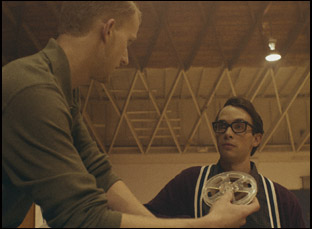
I had been working towards making films since I was a teenager. I’m not quite the guys you hear about like M. Night Shyamalan or Spielberg that seem to have been born with an 8mm film camera in their hands. But my sophomore year of high school, I got a job projecting movies as an usher/booth/film projectionist [which] I did until I was about 20 and in that window, I got to watch a lot of brilliant movies and got my hands on a lot of 35mm celluloid film prints. At that point, I knew I wanted to direct films and there’s not really an avenue to do that where I grew up. This is pre-digital almost, so there weren’t ways to film things on your phone and have an editing application right there in your hand, and there was a window of time when I needed to shoot on digital cameras, miniDV tapes and so on. Eventually, it got to where by five years ago, we committed to making this movie “The Vast of Night.”
At Toronto, I can recall you saying that this was actually shaped by other mediums for storytelling as much as movies. How did they rub off on this?
We started with a single line for this movie, which is “Black and white, 1950s UFOs, New Mexico, Close Encounters,” and you could go an infinite number of ways with that line. There’s no parameters there. You could make it about a town squabbling and different people in power getting mad, but I’ve seen that movie before where the mayor doesn’t believe it or people think different things or people all get freaked out and don’t trust each other. That isn’t the movie we wanted to make. We didn’t want it to be about jump scares. We didn’t want it to be about a lot of things, so what that left us with is what could be done with the limitations we’d have, and it wasn’t so much the budget that was the limitation. The limitations were put in place because those are creatively interesting.
We wrote a script that we thought could be anything from a radio drama in the ‘30s to a stage play to a podcast and maybe it does become a stage play version of it or maybe it does become a graphic novel. That would be really interesting to see. But when you’re left with that as an objective, what you have to lean heavily into are the things that transcend all those mediums, which are storytelling and dialogue and characters going through some sort of honest human experience. So where we landed with this movie is a place that we thought could hang on the clothesline of three or four really well-told stories. That’s how the movie was structured. And I feel very confident that if you scaled it down and decided to put on an audio-only version of it as a podcast, it would still be fun. And if you decided to do a stage play, it would be an exciting hour-and-20 minutes.
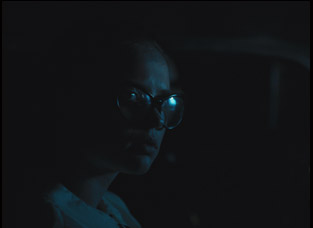
Man, we discovered Whitney, Texas. It’s not like we had that in our back pocket and then decided to write a script around a location like that, but it’s pretty perfect. We discovered the gym first after months of digging around in Louisiana, Kansas, New Mexico, and Texas, looking in all these places and that had a gym that could be our hero location, and then we could figure out where we could put the switchboard and the radio station in conjunction to it [because] those are easy to find. When we got to Whitney we had to do some things to update, [or] I guess down date the gym to make it look 60 years older and then the downtown, those lights don’t hang there in the street above everyone and it’s not a gravel road like we made it look like, so we played with it and our art team made a beautiful little New Mexico downtown out of a much more modern looking Whitney downtown than anybody would imagine.
I’ve heard once it turned dark, the town was yours.
The movie doesn’t allow us to shoot anything in the daytime, so our day started when the sun set and it ended when the sun rose. Even the nights when we were just inside, like a [scene at the] switchboard or radio station, we did not break our schedule. We would still come into work at 6 pm and get off at 6 a.m. and when you get into a zone like that, you don’t want to be jacking with everyone’s rhythm. But it was a very lovely side product that when you’re not even starting to shoot until 8 o’clock, everyone’s disappearing and going to sleep, so a lot of your problems go away. You don’t have modern cars driving around, so you don’t have to blockade streets, and you don’t have to really do a lot of knocking on doors and asking can we film across the street for the next hour because everyone’s asleep. People would love to turn on their front porch lights and they would be the wrong color, so we would have to ask if we could swap bulbs out, but other than little things like that, we did what we wanted to do in the city. That’s generally true of most small towns in the southwest.
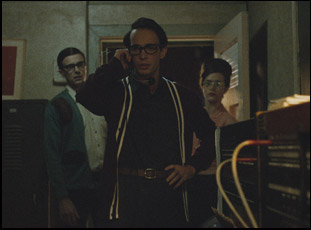
We wanted the movie to feel like you could crawl into the space where it took place, like you got done with it and it felt like you’d been in Cayuga, New Mexico, which is not a real place at all. And I’m really big on feeling how the geography exists in movies and spacing and where characters are in relationship to each other [because] you can find natural drama there. In our film, we choose to have a scene where you connect people that are disconnected spatially, like over the phone, but you don’t know where they are in connection with each other, so there’s a moment of drama we found out we could play out there in the screenplay and hopefully it works for people.
When you have characters are isolated, how did you figure out the best way to facilitate those reactive performances?
We rehearsed with them heavily and I got their performances where I liked them before the shoot. Any time the two leads would have lines against each other, they came in and read their offscreen lines for each other, which was very kind of them and thoughtful. We hadn’t even cast one of the main characters — an offscreen caller named Billy until a year after we finished shooting, so he wasn’t able to read lines against [Everett], so to get the performances right, it was mostly honing them in in rehearsal and making sure that when we were shooting them on the day of, they were holding in the zone of where we had gotten them in rehearsals because film sets can be distracting and very buzzy and a lot of energies go a lot of different ways, both positive and negative. That’s just film sets, but but you don’t want those things to affect your performers.
Is the rumor true you were working with a live switchboard?
Yeah, it’s not even a rumor. It’s just a fact of life. Craig Sanger, one of the co-writers of the film, found a telephone museum in Oklahoma City in the research process and this group of telephone museum workers were all just AT&T employees from the ‘50s and ‘60s, ‘70s, who helped us locate the switchboards. One man in particular, John Wright, did more than just polish them up and get them looking fresh, he connected all of it for us and built it to where when we could call into the switchboard. That’s why it lights up like it does. That why it has the functionality — the key Sierra turns to connect the calls really connects and that’s not an effect. That just functions, and the sounds are real.
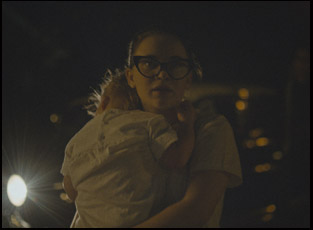
We had to work very hard because there are a lot of points in there where a character like Everett is responding to somebody different eight or nine months earlier on set who has a different meter to their dialogue and a different speed to their speech. We put Billy in there and Billy talks a little bit slower and has a little bit different meter, so we had to find very interesting technical ways to stretch out Everett’s responses. It was the same on Fay’s side. Faye does some very quick switchboard work in this movie, so when we recorded the young ladies’ voices that she calls on the phone, they were sometimes a little slow, so we’d have to cut them very closely or pull out a word here or there to get them to feel like they were a natural back and forth. I let Jake and Sierra have their own rhythm as their characters on set and then we found a way to match those rhythms to the characters on the other side in post later.
What it’s like to have your first feature under your belt?
This is something I’m very proud of. I think it landed at the best place where it’s going to live for a while at Amazon. Everyone that worked on this movie since it debuted a year ago has been passionate about it and have found creative ways to make it relevant and to get it in front of the eyes of other people, so this movie has done everything I could’ve imagined. Now I really hope it can become the kind of thing that people watch for several decades.
“The Vast of Night” starts streaming on Amazon Prime on May 29th.
